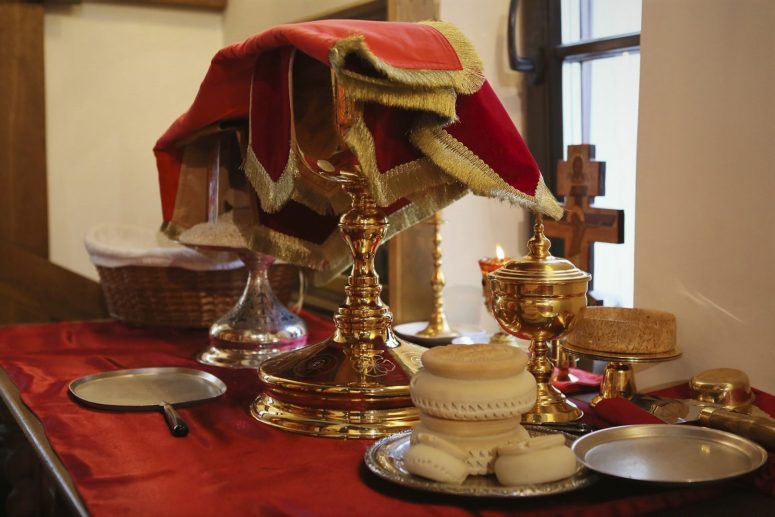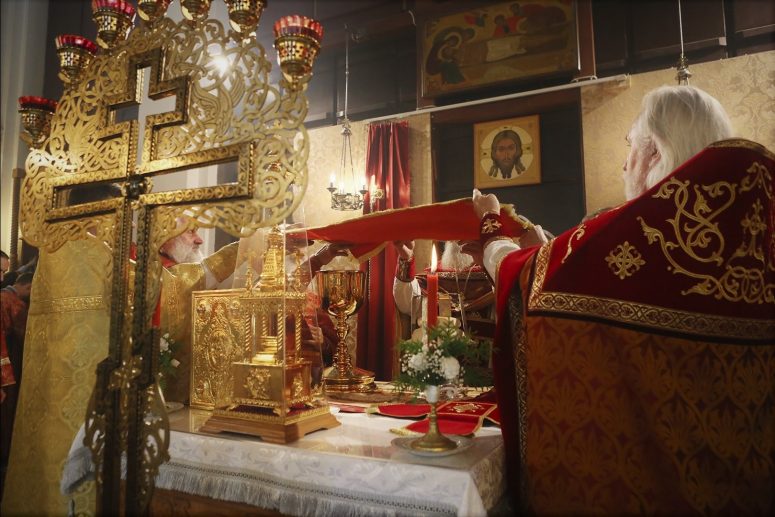
Many churches astonish us with beauty and luxury of their interior decoration. And sometimes the incoming person has a question: what is it all for? If we talk about beauty, the church is created from the best that people have, that is why gold, precious fabrics, semiprecious and precious stones, hand-made sewing, etc. are used.
In addition to the aesthetic aspect, the entire construction and design of the church have a symbolic meaning. The church “speaks” to people who come to it, not only with the words of services, but also with objects: a person, by looking at earthly things in the space of the church, should try to see heavenly ones in it. The church represents the Divine Kingdom, which the Church leads the whole world to.
The very symbolism of the church expresses the Liturgical life of the Church: in the sacrament of the Eucharist, which is performed in the church; there are communication with God and revival for a new life. Everything is intertwined in the church: architecture and the action itself, the plasticity and rhythm of the clergy’s movement, the light and its sparkling in the folds of precious fabrics, censing, church poetry and singing.

In addition to icons and church goods, various vestments are used here: chalice cover and veil, shrouds, katapetasma, banners, etc. Some of them initially had just practical significance, such as, for example, chalice cover and veil were used in the Ancient Church to protect the Holy Gifts from dust, flies, and other flying insects. Katapetasma (Greek καταπέτασμα – “curtain”), on the contrary, initially had a symbolic meaning. This is the curtain behind the iconostasis that separates the royal doors and the Lord’s table. In the Old Testament tabernacle – later in the Jerusalem temple – it veiled the Holy of Holies from the Holy Place (Exodus 26: 31-33). According to the Gospel narrations, this veil was rent in twain at the moment of the Savior’s death on the cross (Matthew 27:51; Mark 15:38; Luke 23:45). Now, its opening and closing are a symbolic action: most often it is open during especially important moments of a service. For example, during the division of the Lamb after the exclamation “Holy Things are for the holy” it is closed, because the Sacrament that is performed at this moment is incomprehensible not only for people, but also for angels. The veil is also closed during the communion of the priests, representing the Last Supper – this symbolizes that this event happened unknown to people. The katapetasma is a curtain, most often decorated with an embroidered cross, and it can be of different colors, just like the vestments – depending on the feast. Same with analogion covers – in the church’s decoration they have only practical meaning, but they are also changed depending on the period of the church calendar. I would like to note that the tradition of associating the color of vestments with various feasts is different in the Local Orthodox Churches: in the Greek Church, for example, there is no such tradition. The Russian Church uses vestments of seven colors: gold, white, sky blue (blue), red, burgundy (purple), green and black. I would like to highlight Shrouds separately – these are canvases with images of the Savior or Theotokos embroidered on them. The shroud with the image of the Savior’s lay in a sepulcher is used in the divine services of the Holy Week: on Great Friday and Great Saturday. Supposedly, initially the veil, which covered the Gospel during the “entrance with the Gospel”, was used for this purpose, but over time they became an independent liturgical object.
The custom of using the shroud with the image of the Mother of God during the feast service on Dormition of Theotokos appeared in the 19th century under the influence of the Jerusalem tradition, and is generally accepted now.
Of course, any church symbolism is not absolute, but for us, Orthodox Christians, it is important. Any church symbol helps to show the reality of what is happening, and not just to portray it.




